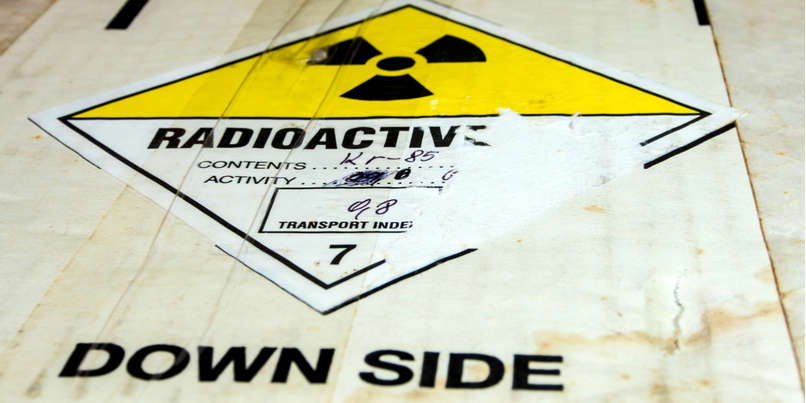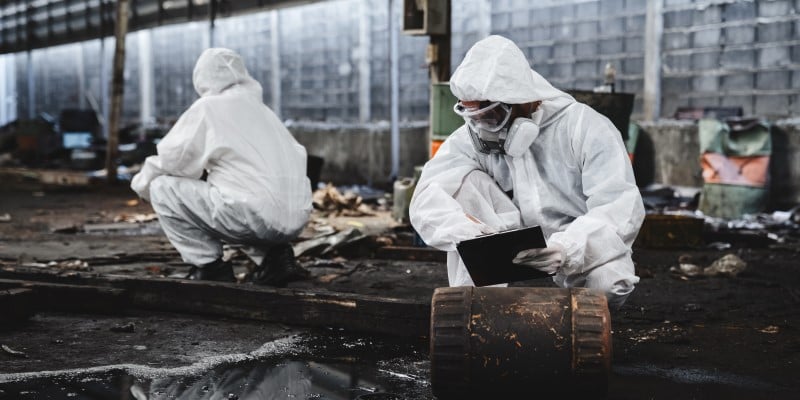 In March 2017, the UK Public Health Executive (PHE), published the results of a survey that explored the radiological impact of the transport of radioactive material by road and rail.
In March 2017, the UK Public Health Executive (PHE), published the results of a survey that explored the radiological impact of the transport of radioactive material by road and rail.
It calculated the number of packages of radioactive material consigned by road to be in the region of 110,000 to 150,000 per year, with 76% comprising the transport of radiopharmaceuticals for medical purposes, 20% for the civil nuclear industry and 4% for industrial radioactive sources.
The report concluded that, under normal safe-handling scenarios, there is a negligible risk of exposure to ionising radiation for those directly involved in the transport of radiological substances - in the region of 0.004 to 2 millisieverts (mSv) annually for the operatives responsible for loading and unloading; between 0.001 - 0.1 mSv per year for HGV drivers and 0.001 mSv for members of the public.
To put these figures into some kind of context, the PHE calculates that the average person in the UK is exposed to approximately 2.7 millisieverts (mSv) of ionising radiation per year, the majority of which comes from naturally occurring radiation in homes and workplaces, or from controlled medical exposure such as the use of MRIs, X-rays and CT scans.
But with the repeated transport and handling of any radioactive substance comes the risk, however small, of accidental release into the environment, such as in the case of a road traffic collision. In such situations, it is crucial that first responders are thoroughly trained in radiation safety procedures to ensure they can accurately identify, measure and contain any potential radioactive hazard.
First responders currently have access to two vital pieces of electronic instrumentation for dealing with radiation incidents - a survey meter (such as the Mirion/RADOS RDS-200 Universal Survey Meter) which is used to determine if radiation is present and monitor its level of activity; and a dosimeter (such as the Thermo Scientific Electronic Personal Dosimeter Mk2) which measures an individual's personal "dose" of ionising radiation.
One of the most effective ways for first responders to gain confidence and familiarity with using their radiation safety equipment is through the setting up of realistic radiation safety training scenarios.
As outlined in a recent radiation safety case-study by the Mid and West Wales Fire and Rescue Service, traditional "make pretend" training simulations more often than not comprise trainees exercising their real detectors but with no actual radiation source to detect. The trainees rely instead on a sequence of "exercise values" provided by their instructor.
These types of simulated exercises invariably lack authenticity, and the trainees' reliance on a third party to provide the key information on which to base their decisions can lead to a gap in preparedness. Crucially too it is not possible for trainees to experience true readings on their detectors as the devices are only ever registering harmless levels of background radiation.
One solution to this challenge is the use of simulators for radiation safety training that replicate every operational feature of a real detector, and that respond to a harmless electronic signal which acts as the simulated ionising radiation source. The key detail is that the simulator detectors are the identical units that the crews will use on a live incident. The units have simply been modifed to respond to the simulation source rather than to actual radiation.
The use of replica detectors ensures that trainees learn to rely on the values displayed on their instruments. In doing so they develop a better understanding of the relationship between the measurements on their survey meter and their own personal dose readings and they experience the real-time effects of Time, Distance and Shielding on their instrumentation.
For first responders looking to experience radiation hazards first-hand, the use of electronic simulators provides genuine immersion training with all the elements of a real-life incident, but with zero risk to the trainees, their equipment or the environment.







